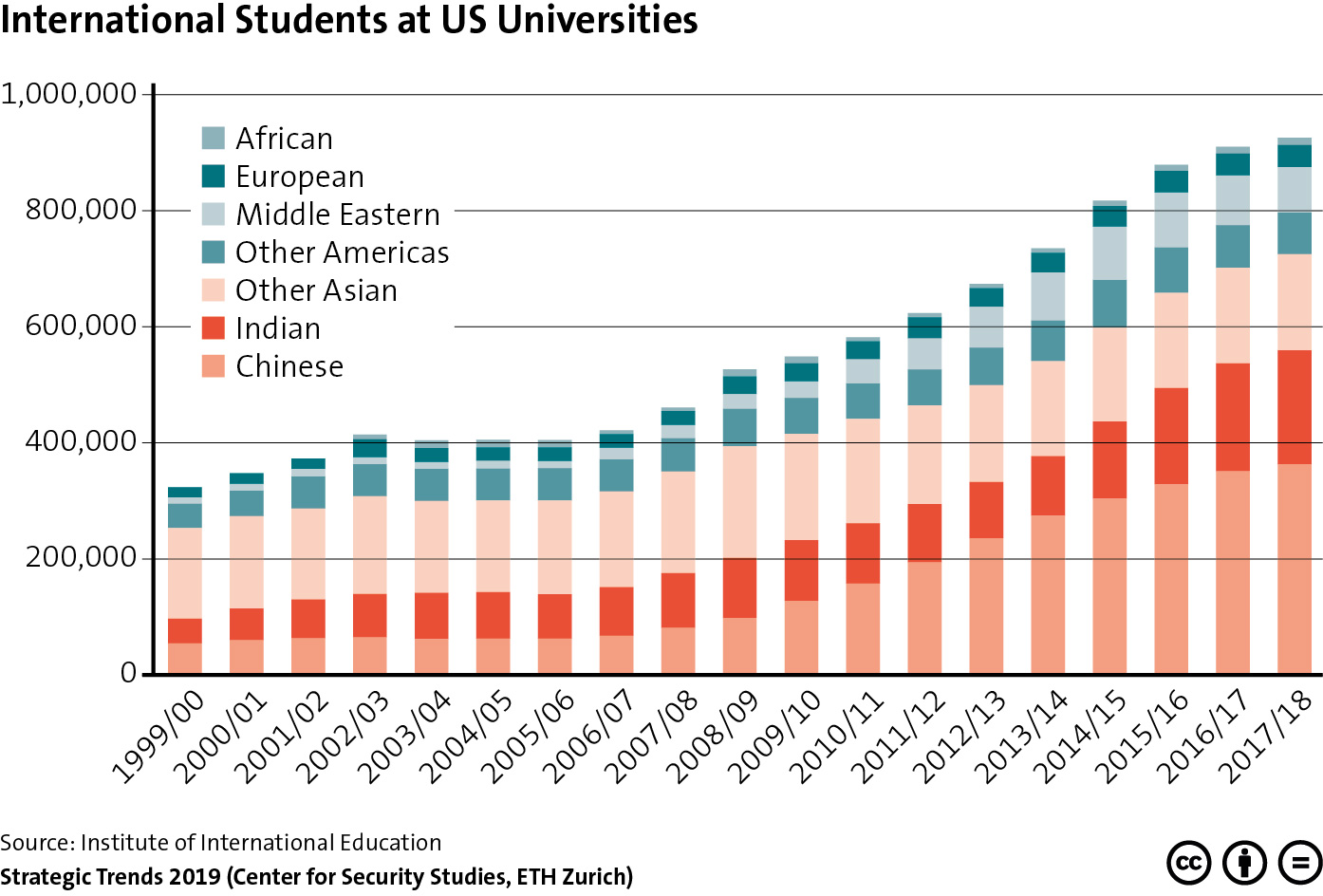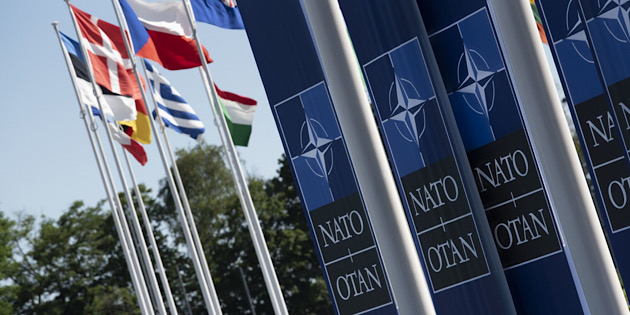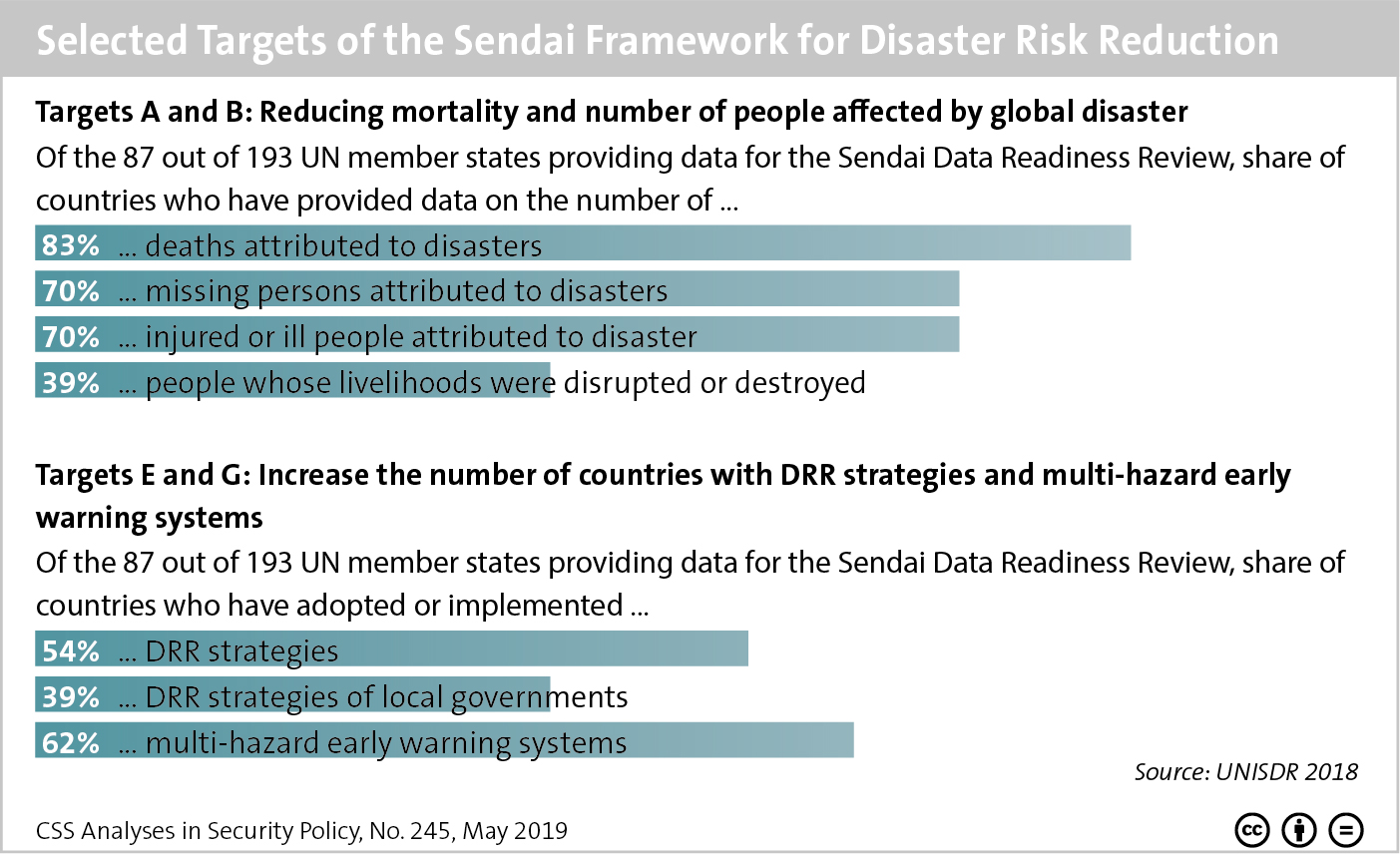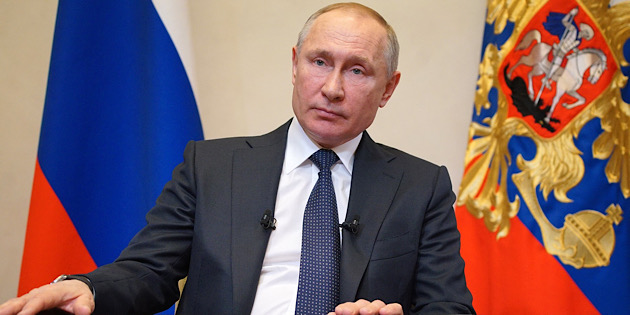
This graphic outlines the rising number of international students enrolled at US universities since 1999. To find out what this trend could mean for the transfer of specialized knowledge from Western countries to emerging nations – particularly regarding the West’s military-technological superiority – see Michael Haas’ chapter in Strategic Trends 2019 here.




